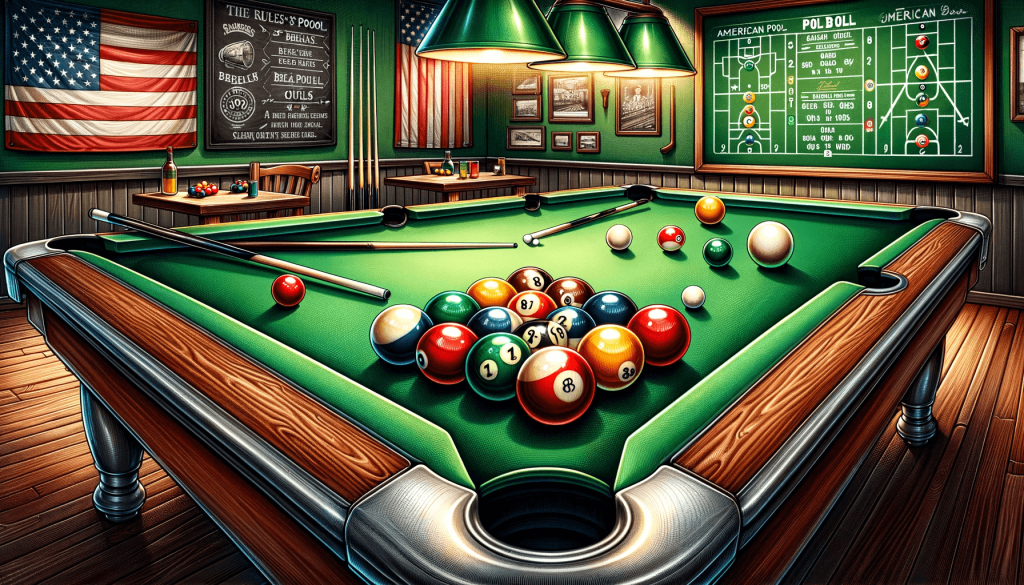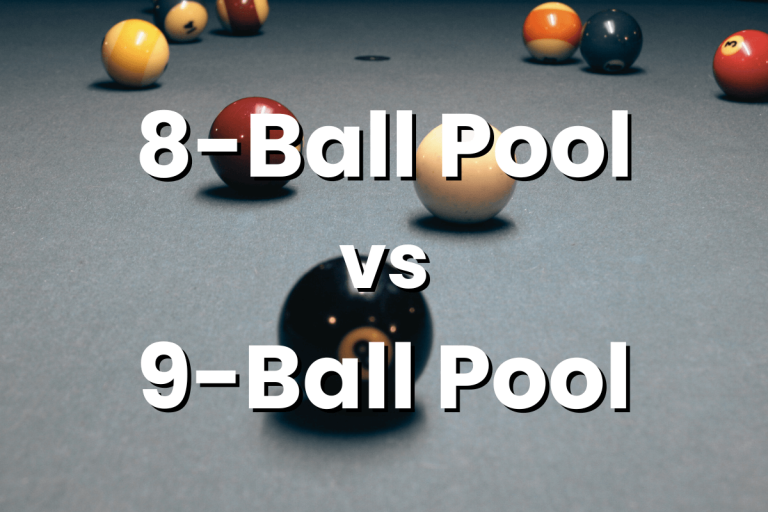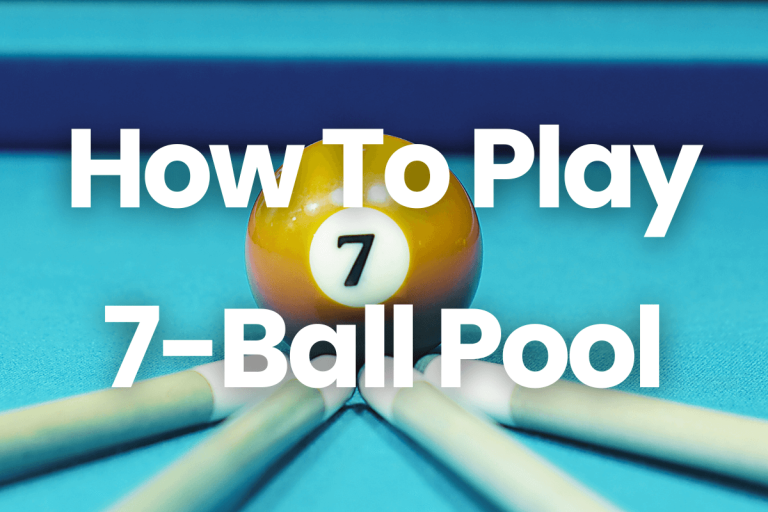Master American Pool Rules | Strategies for Winning Every Game! (2024)
American pool, a staple in game rooms and bars across the United States, has evolved into a beloved pastime, celebrated for its strategic depth and skillful play. Its widespread popularity extends from casual players to professional leagues, highlighting its inclusive appeal. Understanding the American pool rules is crucial, not just for beginners taking their first shot but also for seasoned players aiming to refine their strategy. This comprehensive guide serves as a key to unlocking the nuances of the game, ensuring enjoyment and a competitive edge for all enthusiasts.
History and Evolution of American Pool
American pool’s journey began in the 15th century, evolving from outdoor lawn games similar to croquet, played in Northern Europe. This game gradually moved indoors, transforming into billiards. By the 19th century, it reached American shores, where it underwent remarkable transformations to suit American tastes and playing styles. The American version distinguished itself with larger tables, bigger balls, and different cloth, creating a unique blend of precision and strategy. Unlike British pool, known for its smaller tables and balls, or snooker with its complex scoring, American pool stands out for its straightforward, yet challenging gameplay, making it a favorite in competitive and casual circles alike.
Equipment and Setup
In American pool, the equipment and setup are key to the game’s character.

Pool Table: The centerpiece is the pool table, typically measuring 9 feet long by 4.5 feet wide, though 8-foot varieties are common in homes. The playing surface is lined with a smooth, finely woven cloth, often green, allowing balls to roll with precision. Six pockets, one at each corner and two in the middle of the longer sides, await the sinking of the balls.
Balls: A standard set consists of 15 object balls, each 2 1/4 inches in diameter, alongside a slightly smaller cue ball. The object balls include seven solid-colored balls (numbers 1-7), seven striped balls (numbers 9-15), and the black 8-ball.
Cue Stick: The cue stick, usually around 58 inches in length, is a tapered rod made from wood or composite materials. It ends in a small tip, typically made of leather, which is used to strike the cue ball.
Ball Arrangement: In a standard game of 8-Ball, the balls are racked at the foot of the table in a triangle formation. The 8-ball sits at the center, with a solid and a stripe ball at each bottom corner of the triangle. The other balls are arranged randomly within this triangle.
Basic American Pool Rules and Objectives
Primary Objective
In American pool, the main goal varies depending on the game variant, but typically, it involves pocketing a specific set of balls, culminating in the 8-ball for the popular 8-ball variant. Players are either assigned solid or striped balls based on the first legally pocketed ball after the break. The ultimate aim is to legally pocket all your assigned balls, followed by the 8-ball, without committing any fouls.
Break Shot Rules
- The game begins with a break shot, where the player strikes the racked balls.
- The cue ball must be hit from behind the head string (an imaginary line across the table near the end).
- To be legal, the break must either pocket a ball or cause at least four object balls to hit the rails (sides of the table).
- Failing this, the break is considered a foul, often resulting in a re-rack or the opponent getting the chance to break.
Turn and Foul Rules
- Players take alternate turns. A player continues their turn as long as they legally pocket a ball.
- A legal shot requires the player to hit their group of balls first and either pocket a ball or have any ball (including the cue ball) hit a rail.
- Fouls include failing to hit your own ball first, not hitting a rail after contact, pocketing the cue ball (a scratch), and hitting the wrong group of balls.
- Committing a foul typically results in a penalty, like giving the opponent “ball in hand” (placing the cue ball anywhere on the table for their shot).
Game Variants and Their Rules in American Pool
Seven-Ball Pool
Objective: Pocket balls in numerical order, ending with the 7-ball.
Rules: Played with seven balls (1-7) racked in a hexagon. Players must hit the lowest-numbered ball first.
Winning Condition: Legally pocket the 7-ball.
8-Ball Pool
Objective: Players are divided into two groups, solids (balls 1-7) or stripes (balls 9-15). The goal is to pocket all of your group’s balls, followed by the 8-ball.
Rules:
The game begins with a break shot. The first player to legally pocket a ball decides their group (solids or stripes).
Players must hit one of their group’s balls first on each shot.
Pocketing the 8-ball before clearing your group or pocketing it in the wrong pocket results in an instant loss.
Winning Condition: The first player to legally pocket the 8-ball after clearing their group of balls wins.
9-Ball Pool
Objective: Players aim to pocket the balls in numerical order, from 1 to 9.
Rules:
The balls are racked in a diamond shape, with the 1-ball at the top and the 9-ball in the center.
Players must always hit the lowest-numbered ball on the table first.
A player continues their turn as long as they legally pocket any ball.
Winning Condition: The player who legally pockets the 9-ball, at any point during the game, wins.
Ten-Ball Pool
Objective: Pocket balls in numerical order, ending with the 10-ball.
Rules: Similar to 9-ball but played with ten balls. All shots must be called.
Winning Condition: Legally pocket the 10-ball after clearing others.
Straight Pool (14.1 Continuous)
Objective: This is a call-shot game where players aim to reach a predetermined number of points, typically 150.
Rules:
Players earn one point for each ball pocketed.
They must call the ball and the pocket for each shot.
When only one object ball remains, the balls are re-racked, and the game continues.
Winning Condition: The first player to reach the agreed-upon number of points wins.
One-Pocket Pool
Objective: Pocket a set number of balls into a single designated pocket.
Rules: Each player chooses one of the foot corner pockets. Only balls pocketed in that pocket count.
Winning Condition: Pocket the predetermined number of balls in your pocket.
Bank Pool
Objective: Pocket a set number of balls using bank shots.
Rules: Balls must be banked (hit off a cushion before pocketing) or kicked (hit a cushion before hitting a ball).
Winning Condition: Be the first to bank a predetermined number of balls.
Each of these variants adds a distinct flavor to American pool, offering a range of challenges that cater to different skill levels and strategic preferences.
Fouls and Penalties in American Pool
Common Fouls
No Ball Hits a Rail: After striking the cue ball, at least one ball must hit a rail or be pocketed, or it’s a foul.
Cue Ball Scratch: Pocketing the cue ball or knocking it off the table.
Wrong Ball First: Hitting an opponent’s ball before your own.
No Foot on Floor: At least one foot must be on the floor during a shot.
Double Hit: Hitting the cue ball more than once on a single stroke.
Push Shot: The cue tip stays in contact with the cue ball for too long.
Jump Shot: Illegally jumping the cue ball over another ball.
Potting the Wrong Ball: Accidentally pocketing an opponent’s ball or the 8-ball prematurely.
Moving Balls: Accidentally moving or touching any balls with hands or cue.
Consequences of Fouls
Ball in Hand: The most common penalty for a foul is giving the opponent “ball in hand,” where they can place the cue ball anywhere on the table for their next shot.
Re-Rack or Loss of Game: Specific fouls, like pocketing the 8-ball early in 8-ball or the wrong ball in 9-ball, can lead to an immediate loss of the game or a re-rack.
Turn Over: The player’s turn ends after committing a foul, and the opponent takes over.
Point Penalties: In games like Straight Pool, fouls can result in point deductions.
Conclusion
American pool, with its diverse variants like 8-Ball, 9-Ball, and Straight Pool, offers a rich blend of skill, strategy, and sportsmanship. Key elements like legal breaks, fouls, and specific game objectives form the core of its rules. Whether you’re a beginner or a seasoned player, understanding these American pool rules enhances your gameplay experience. Embrace the challenge, practice regularly, and most importantly, enjoy the camaraderie and excitement that come with every frame of American pool.
FAQs
What is the difference between American pool and British pool?
American pool is typically played on larger tables with bigger balls and wider pockets, compared to British pool. The game rules and ball colors also differ between the two styles.
How do you determine who breaks in American pool?
The break is usually determined by a coin toss or a lag, where each player hits a ball to the end rail; the one whose ball ends up nearest the starting rail gets to break.
Can you hit your opponent’s ball first in American pool?
Generally, no. In most game variants, you must hit your own group of balls first. Hitting the opponent’s ball first is usually considered a foul unless it’s the only ball remaining on the table.
Is it a loss if you sink the 8-ball on the break in 8-Ball pool?
In most rule sets, pocketing the 8-ball on the break does not result in a loss. Instead, the player can either re-spot the 8-ball and continue playing or opt for a re-rack.
Can you play American pool with more than two players or teams?
Yes, American pool can be played with more than two players or in teams, especially in casual settings. The rules may be slightly adjusted to accommodate more players.







